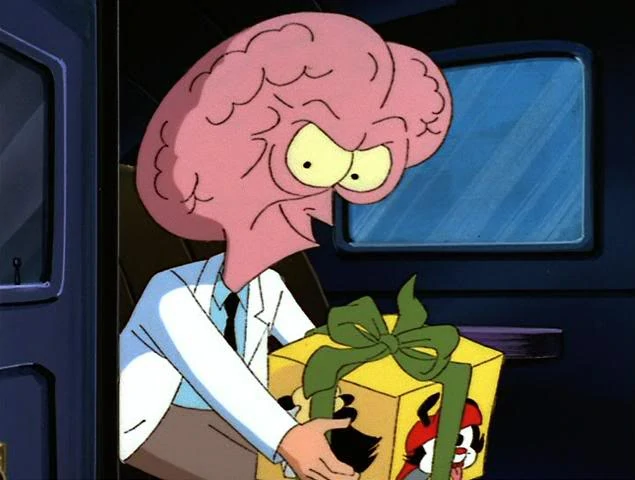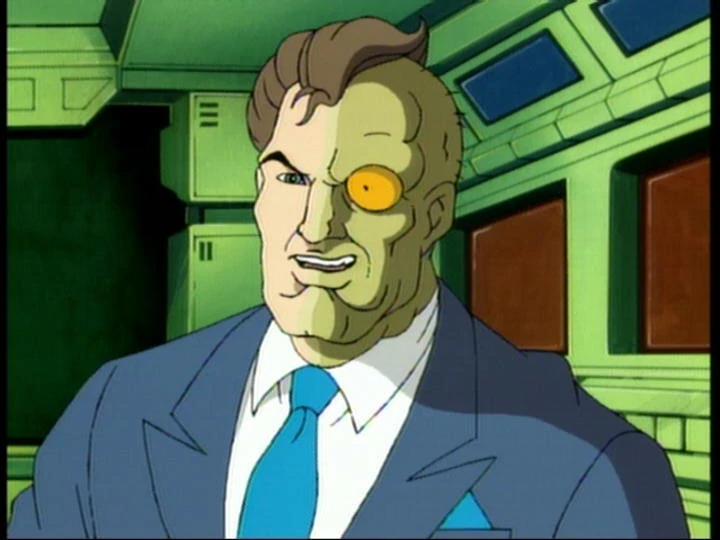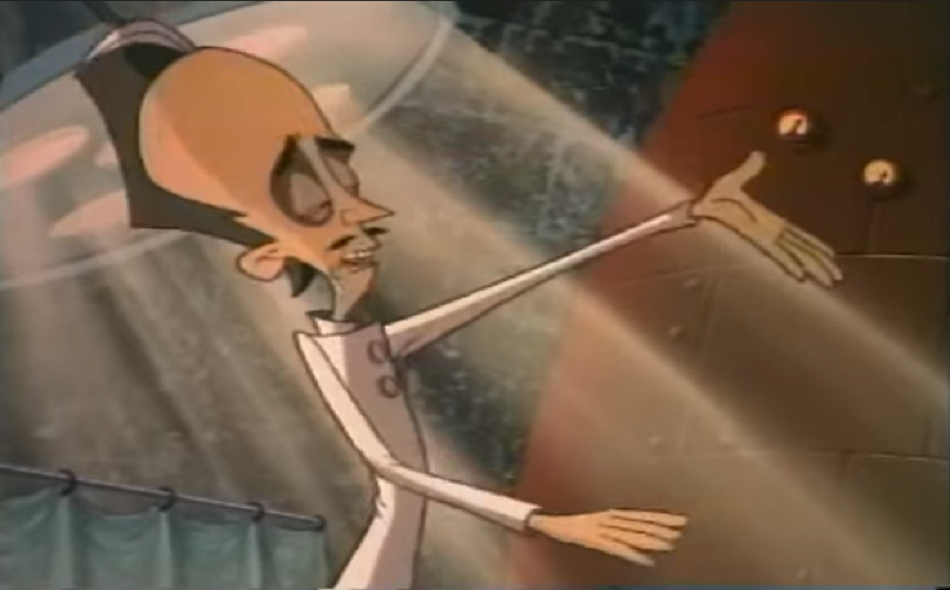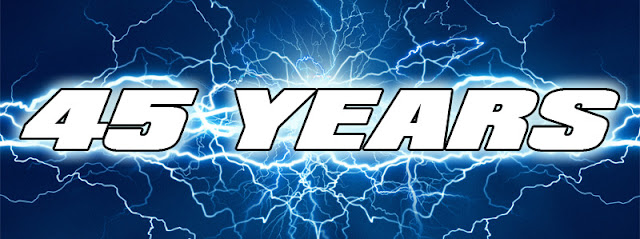EPISODE GUIDE (incomplete):
“Operation Decoy” (4/18/53) – The Beta crew
investigates pirate attacks on shipping lanes.
“The Case of the Invisible Saboteurs” (4/25/53) – The Beta
crew looks into the disappearance of highly-classified files.
“The Planet of Ice” (5/2/53) – The Beta crew must rescue
a mail ship forced to land on frigid Jupiter.
“Whispers in the Mind” (5/9/53) – A mind-control device
gives false information to two Rangers on a navigation project.
“The Crater of Peril” (5/16/53) – The Beta crew looks
for radioactive material on the dark side of the moon.
“The Globe Men of Oma” (5/23/53) – While searching for a
missing spaceship, Rod and Frank are captured by the Omans.
“The Adventures of the Venusian Sea” (5/30/53) – A giant
octopus-like creature terrorizes the sea.
“The Little Men of Mercury” (6/6/53) – The Beta crew
visits a planet populated by tiny humanoids.
“World of the Doomed” (6/13/53) – The Beta crew
investigates a smuggling operation on a prison asteroid.
“The Strangler Trees of Triton” (6/20/53) – The Beta crew
rescues a fellow Ranger from a dangerous forest.
“Stranger from Outer Space” (6/27/53) – An alien robot
kidnaps Rod.
“The Phantom Birds of Beloro” (7/4/53) – Rod and Frank
rescue some old prospectors from bird-like preadators.
“The Black Cloud of Calistro” (7/11/53) – NO SYNOPSIS
AVAILABLE.
“The Suits of Peril” (7/18/53) – NO SYNOPSIS AVAILABLE.
“Apples of Eden” (7/25/53) – NO SYNOPSIS AVAILABLE.
“Space Bugs” (8/1/53) – NO SYNOPSIS AVAILABLE.
“The Martian Queen” (8/8/53) – NO SYNOPSIS AVAILABLE.
“The Fire Deamons of Delmos” (8/15/53) – NO SYNOPSIS
AVAILABLE.
“The Big Hammer” (8/22/53) – NO SYNOPSIS AVAILABLE.
“The Volcanoes of Venus” (8/29/53) – NO SYNOPSIS AVAILABLE.
“The Death Ball” (9/5/53) – NO SYNOPSIS AVAILABLE.
“The Unseen Planet” (9/12/53) – NO SYNOPSIS AVAILABLE.
“The Madness from Space” (9/19/53) – NO SYNOPSIS AVAILABLE.
“The Looters of Leeron” (9/26/53) – Rod is captured by a
group of smugglers to work in their illegal radioactive mineral mine.
“The Octopus of Venus” (10/3/53) – A routine assignment to salvage
a wrecked spaceship leads to trouble under the sea.
“Colossus of Centauri” (10/10/53) – Rod breaches the end of the
solar system and discovers a planet of giants.
“The Lights from Luna” (10/17/53) – Rod must protect Earth
from the destructor of Solar City.
“The Twin Planet” (10/24/53) – Investigating an old theory
leads the Beta crew to discover a primitive land that resembles
Manhattan Island before Columbus.
“The Treasure of Tesoro” (10/31/53) – Rod and Frank are on
guard duty for the treasury vaults of Space Fortress Tesoro.
“The Robot Robber of Delmos” (11/7/53) – The Beta crew
investigates a bank robbery by a humanoid robot.
“The Magic Man of Mars” (11/14/53) – A carnival performer
leads a secret life as a space pirate.
“The Stickman of Neptune” (11/21/53) – A stowaway steals the
Beta to head for Neptune to search for a treasure.
“Money-Makers of Juno” (11/28/53) – Swift is kidnapped by a
ring of interplanetary counterfeiters.
“The Deep Sleep” (12/5/53) – Interplanetary bank robbers use
oxygen boosters to put everyone to sleep on Ganymede.
“The Cyclops of Themis” (12/12/53) – NO SYNOPSIS AVAILABLE.
“The Electric Men” (12/19/53) – NO SYNOPSIS AVAILABLE.
“The Copernicus Diamond” (12/26/53) – NO SYNOPSIS AVAILABLE.
“The Stone Men of Venus” (1/2/54) – NO SYNOPSIS AVAILABLE.
“Energy Eaters from Luna” (1/9/54) – NO SYNOPSIS AVAILABLE.
“Operation Dinosaur” (1/23/54) – NO SYNOPSIS AVAILABLE.
“Escape by Magic” (1/30/54) – NO SYNOPSIS AVAILABLE.
“The Invisible Force” (2/6/54) – NO SYNOPSIS AVAILABLE.
“Return of the Stickmen” (2/13/54) – NO SYNOPSIS AVAILABLE.
“The Fishman of the Venusian Sea” (2/20/54) – NO SYNOPSIS
AVAILABLE.
“The Strong Man of Mayron” (2/27/54) – NO SYNOPSIS
AVAILABLE.
“The Eel of Iapetus” (3/6/54) – NO SYNOPSIS AVAILABLE.
“The Strange Men of Leefri” (3/13/54) – NO SYNOPSIS
AVAILABLE.
“The Monkey that Couldn’t Stop Growing” (3/20/54) – The planet
Clavo enters the solar system due to its erratic orbit.
“The Plan of Planet H” (3/27/54) – The Beta crew
discovers Planet H plan to flood and take over the Earth.
“Invasion from Dimension X” (4/3/54) – The Beta crew
encounters shadowy figures from another dimension.
“The Matter-Transfer Machine” (4/10/54) – A gang uses a
transporter to smuggle isotopes off of Earth.
“Terror in the Space Lighthouse” (4/17/54) – Two inmates
plan an escape from an asteroid prison.
“Assignment Danger” (4/24/54) – Wormsey encounters trouble
on a routine passenger liner trip to Venus and is rescued by what seems to
be a kindly elderly woman.
“Bird Girl of Venus” (5/1/54) – An archaeological expedition
leads to the discovery of a winged humanoid.
“The Exploding Man” (5/8/54) – The Beta crew takes on
attempts to loot a uranium discovery on Ganymede.
“The Metal Eaters” (5/15/54) – NO SYNOPSIS AVAILABLE.
“The Man who was Radioactive” (5/22/54) – NO SYNOPSIS
AVAILABLE.
“The Cobalt Bomb” (5/29/54) – NO SYNOPSIS AVAILABLE.
















































